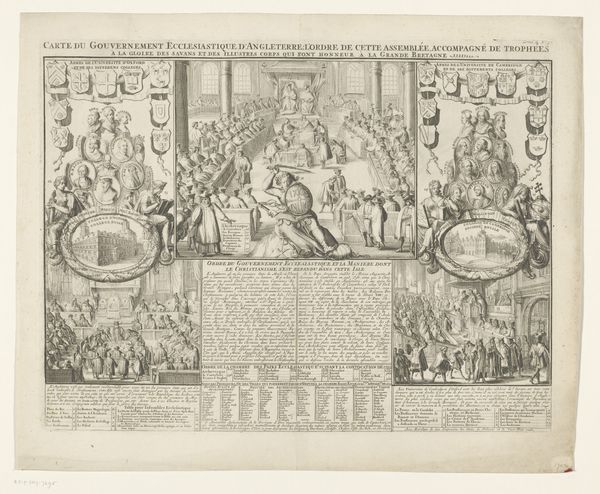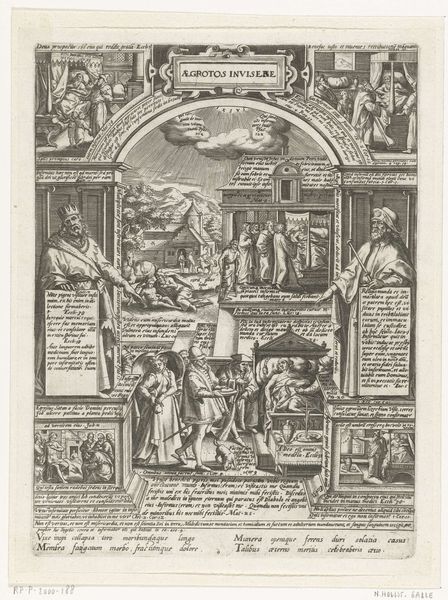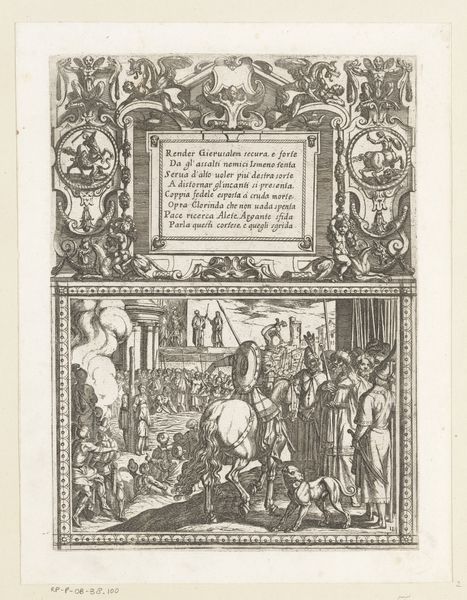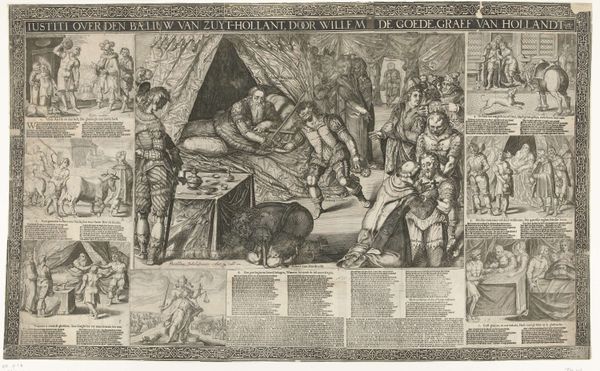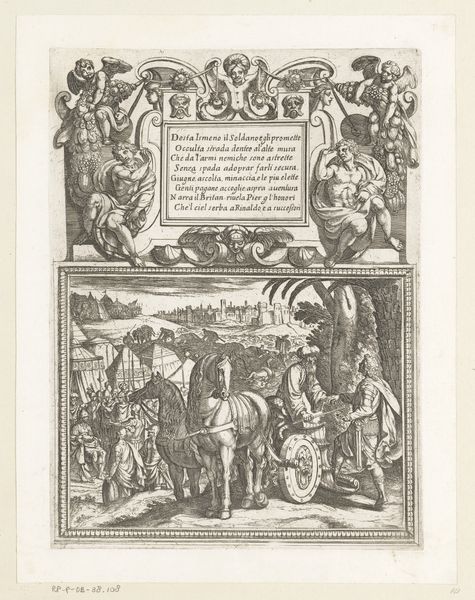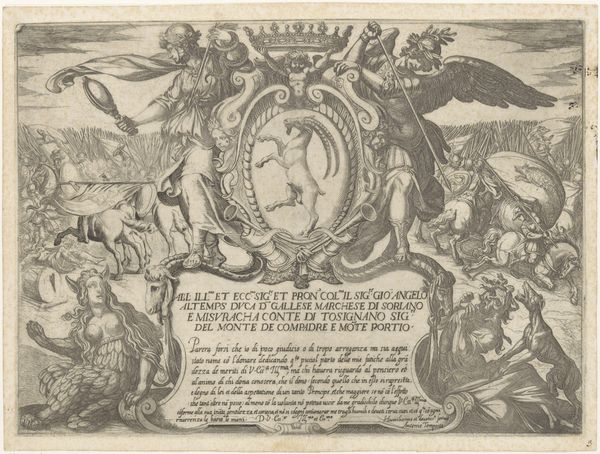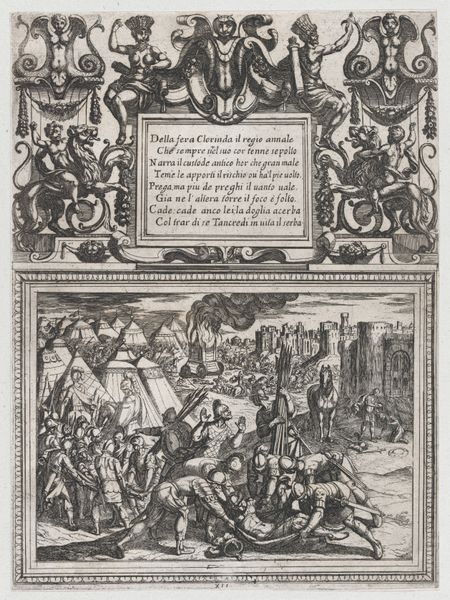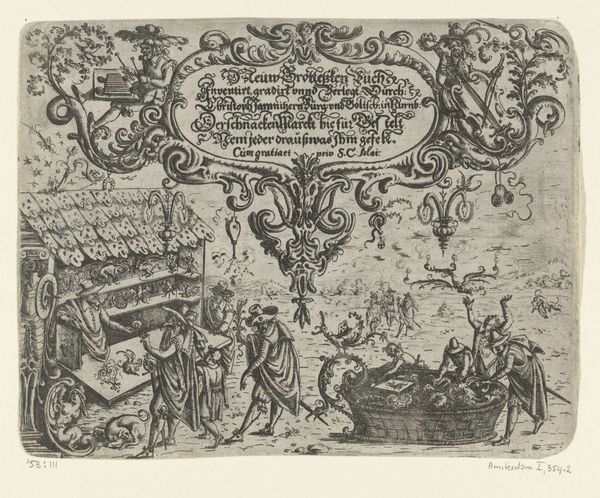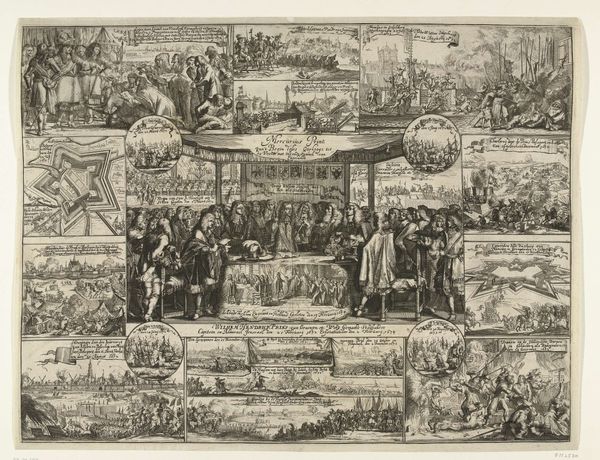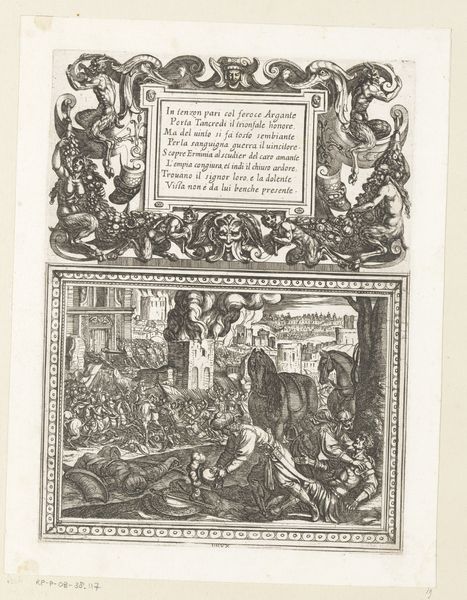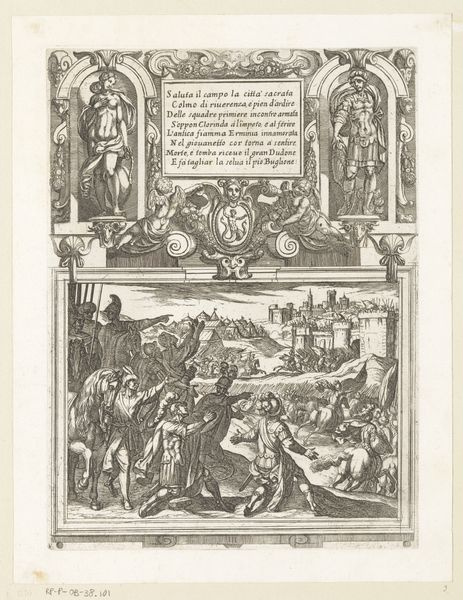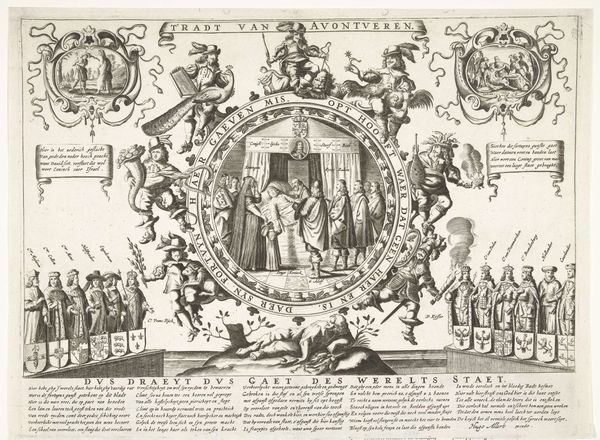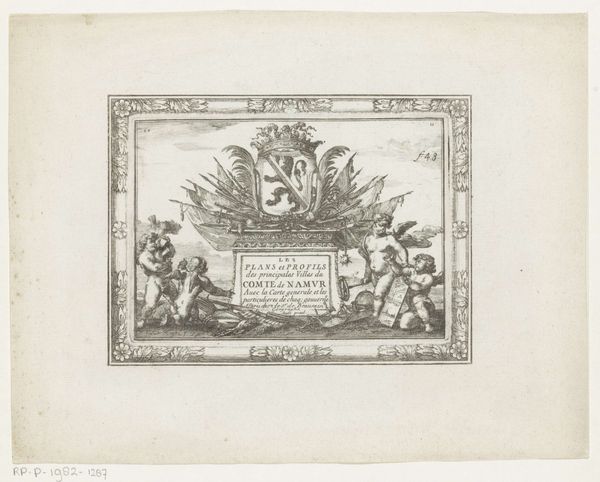
Titelprent van de serie In quibus omne genus venationis, aucupij, piscatusque 1578
0:00
0:00
philipsgalle
Rijksmuseum
print, engraving
#
allegory
#
animal
# print
#
old engraving style
#
landscape
#
figuration
#
11_renaissance
#
genre-painting
#
northern-renaissance
#
engraving
Dimensions: height 214 mm, width 297 mm
Copyright: Rijks Museum: Open Domain
Editor: This is "Titelprent van de serie In quibus omne genus venationis, aucupij, piscatusque," an engraving by Philips Galle from 1578, housed in the Rijksmuseum. The composition is just so dense! All those animals surrounding what seems like a dedication. What's your take on it? Curator: What immediately strikes me is the deliberate framing. Notice the carefully arranged rows of animals—how the composition emphasizes the textural variety through contrasting fur, feathers, and scales. Furthermore, the symmetrical arrangement with the inscription at its center produces an image of perfect order. Is this visual order meaningful? Editor: It's so symmetrical it's almost unsettling! I'm curious about why he would organize the image with such a geometric layout. Curator: Consider the way the figures direct our gaze towards the center, despite the scene's apparent activity. This creates a stillness, a moment of constructed tableau. In which this sense of carefully constructed visual harmony may be mirroring the idea of dominion and control. Editor: I hadn't considered it in terms of control! I see your point about drawing attention to this balance of power, now, thanks to Galle's intentional choices in his compositional design. Curator: Indeed. These choices— the texture, the form, the geometric division of pictorial space — can give way to a richer understanding than by seeking some external content or message. Editor: I will keep these things in mind for further study and really look closer. I was fixated on what it *meant*, rather than what it *was*. Curator: A vital distinction! And one that deepens our engagement.
Comments
No comments
Be the first to comment and join the conversation on the ultimate creative platform.
